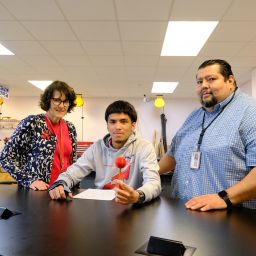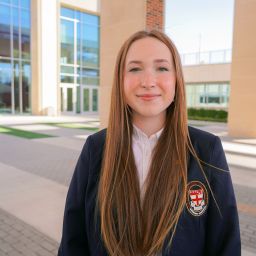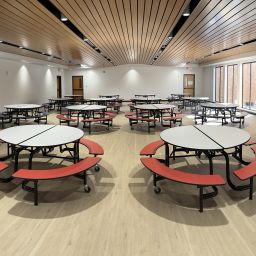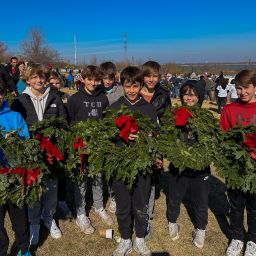
By Matthew Smith
Special to The Texas Catholic
A win/win is how Diocese of Dallas Director of Security and Emergency Management Manny Sanchez described a security project partnership between his office and Bishop Dunne Catholic School’s geographic information systems class students.
“These kids are amazing,” Sanchez said. “What they’re doing is groundbreaking for the diocese.”
The 14 students, under the guidance of geography/GIS teacher Brad Baker, spent Thursday inputing information they had previously collected from law enforcement agencies throughout the diocese’s nine counties.
“The work is time consuming and requires precision, but it’s very fulfilling,” Bishop Dunne senior Candace Miller said.
Project details are many and complex given that Baker’s class employs spatial analysis, cartography, 3D modeling, and other disciplines. The end result, however, will produce detailed layout maps of all schools, and eventually parishes, within the diocese. The follow-up, Sanchez explained, is to couple those maps with offsite access to live video surveillance footage and increased communication upgrades.
“To have remote access to each school’s camera system from one site,” Sanchez said. “where each school will have an icon. If we click on that, all the school’s information and site map will come up, and we can go into their cameras, which is information we can use and forward to police and first responders in times of emergency.”
The system, Diocese Associate Director of Security Jose Munoz said, will help diocese and school officials with preplanning in cases of emergency through pinpointing reunification meeting locations, helicopter landing zones, and so forth, as well as provide vital information to responders while en route.
“Layouts of the building, entrances, points of contact so [rescue workers] will know what they’re coming into ahead of time and won’t be going in blind,” Munoz said. “We’ll be able to communicate across the board from the pastoral center to police command center units and, with video access, be aware of where the threat or situation is beforehand.”
In times of crisis, the mapping and video system may well save precious time and lives.
“The safety and security of our students and staff is the ultimate priority here,” Sanchez said.
The maps, Baker said, will range from basic — something an officer responding to a minor call might use — to more complex, detailed maps helpful during incidents of a SWAT team response or other major crisis.
For now, Bishop Dunne serves as the flagship school. Sanchez soon plans to present the idea to other diocese’s schools, and eventually parishes, as well as area law enforcement agencies.
For Baker, the project affords an opportunity for his students to delve into real-world experience versus classroom tutorials.
It also makes the project personal to the students, Sanchez added, knowing that their work will make a difference both for their school and the diocese as a whole.
“Definitely important,” Bishop Dunne junior Slade Thompson said. “I want to make sure the information and work we’re putting in is good, because this will help others for a long time to come.”
Find more stories celebrating Catholic schools in the Diocese of Dallas in the Jan. 26 print edition of The Texas Catholic.















